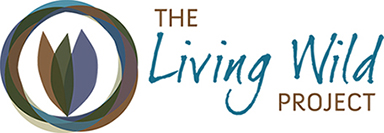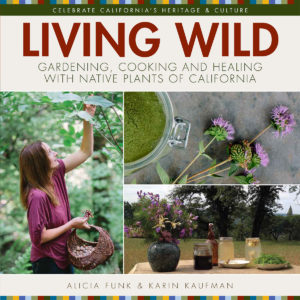Spring Native Gardening Tips
Our plants tell us when spring arrives. Suddenly, buds swell and tiny leaves appear on bare branches. Perennials get green sprouts at the base and leafy spikes appear from hidden bulbs. But there is often a false spring in February, with more winter and freezing weather still to come.
Here are some things to do in the spring native plant garden:
• Enjoy: Rejoice with your plants as the first signs of spring yield to an exuberant energy display. New plants are slow to start and increase dramatically in size their second year in the ground.
• Forget the fertilizer: Native plants do not need fertilizer, which simply encourages lush growth and shortens the lifespan of our natives. Save your money, energy and time.
• Trim and prune: Wait to remove frostbitten branches until you are sure they are dead. Perennials and winter-deciduous shrubs are pruned right before new growth begins. Shrubs that bloom in the spring are pruned after they bloom. For a natural look, most shrubs need just a light shaping or nothing at all. If you have to prune to keep a plant small, the plant has probably not been put in the right place. Many bushes can be pruned to be a small tree if you prefer that look. On shrubs, you can remove lower branches that drag on the ground and perhaps discover a tip that has rooted, ready to grow a new plant. Always use selective pruning by cutting back to a main branch or to the base of the plant; cutting just the tips or shearing a plant usually just encourages weird growth. Some Internet site have good information on pruning natives: http://www.yerbabuenanursery.
• Plant: Although fall is the best time to plant natives, early spring planting is successful if plants can get established before the heat of summer. Since the roots have not yet penetrated into the surrounding soil, check often for moisture near the base of the plant to prevent the root ball from drying out. This happens even though the native soil appears moist. Also protect new plants from deer. If the grower used high nitrogen fertilizer, the plant will be a tasty treat for deer even if it is labeled “deer resistant.”
• Warm season grasses: New green blades of warm season grasses, such as Deer grass (Muhlenbergia rigens), start growing in the spring. Remove old thatch selectively or cut back one-third of the height every few years. Clumps can be divided and replanted. Keep them watered.

Among The Wildflowers
• Seed wildflowers: We scatter wildflower seeds before the first rain of fall, but you can still do this in February or early March. Flowering may be delayed and you will need to water when there is no rain. Wildflowers can return year after year. Unfortunately, grasses, clover and other weeds also show up. After a few years you will learn to recognize the seedling stage of your desired plants and can weed out the worst of the invaders.
• Weed: It’s easiest to remove weeds while they are small. Cutting off the tops of annual weeds with a scuffle hoe is adequate, but perennial weeds need to have the taproot removed. Our native Bittercress has charm, but failing to remove it before the seeds have matured results in seeds popping out annoyingly when you touch the plant.
• Mulch: Wait until the ground warms up to add mulch around your plants. A 2-inch layer will conserve moisture and keep the roots cool when summer temperatures arrive. Be sure to keep the mulch back from the base of the plant to avoid diseases. Some plants form their own mulch with their natural leaf drop.
• Irrigate: During dry spells, check the moisture of your soil by digging down about 6 inches or pushing a long screwdriver to the depth where it meets resistance. Water when the soil is dry, especially on recent plantings. Deep soaking is best. Spring is the time to examine your irrigation system to ready it for summer. Although many two-year-old native plants need little or no water, some plants look better with water. Reestablish basins that you want to continue using and expand the water coverage on individual plants that have increased in circumference. If using drip, replace broken emitters and purge lines. Once we found colonized earwigs in the valve assembly were collecting on the filter screen, blocking the flow of water.
• Observe: Observing is the most pleasurable task of all. Visit your garden often to see the changes that are taking place. Touch unfolding leaves, feel the stems and bark, smell freshly dug soil, savor the perfume of flowers, listen to the hum of insects and the calls of birds, look for signs of animals that have visited, and see tiny details that a casual observer would miss.
• Journal: Jot down some of your observations, such as when plants bloomed, which plants thrived and where you need to make changes. A journal isn’t essential, but it is interesting to review and provides ideas for future action.
With planning, we can have a progression of blooms to watch all spring. Flowering bulbs, native irises, manzanita, flowering currant, redbud, poppies, lupine, penstemon, sage, ceanothus, elderberry, summer grasses and others all form a parade of delight from spring into summer.
Darlene Ward
Darlene’s Diggings
dward@cebridge.net
http://pages.suddenlink.net/
2 comments on “Spring Native Gardening Tips”
Comments are closed.





Great advice! The deer comment is eye-opening, to be sure.
I’ve learned in my few years of native plant growing that less is more, for sure (conservative pruning, little mulching, letting leaves lay). I’ve even started using natural events to garden, just moving leaves into my beds, for example, instead of bagging them up. It gives a natural look in the beds, but lets the rest of the yard look more approachable. Plus, the leaves and needles provide great frost protection over some of the other, more sensitive plants.
Thanks for your comments, Joshua. It’s very satisfying to garden the “natural” way, and you state it well. Since I have pine trees in part of my yard, I use their abundant needles as mulch. There is a debate about the possibility of pine needles adding to the acidity of the soil, but I believe the research that says the needles are slightly acidic but no more than rain water, and the needles do not add to the basic acidity of the soil. An arborist advised that it was best to leave pine needles in place under the pines, but I skim off the top layer of needles that is often very dense and use this in my garden. Since pine needles can be slippery underfoot, I avoid pine needles on slopes where I will be walking. Currently I have two piles of needles in the vegetable garden, waiting for the soil to warm before I spread needles around fruit trees, rhubarb, etc. One thought about native plants–a shrub’s own leaves makes excellent mulch. If I add to that mulch, I am careful not to place it near the base of the plant.